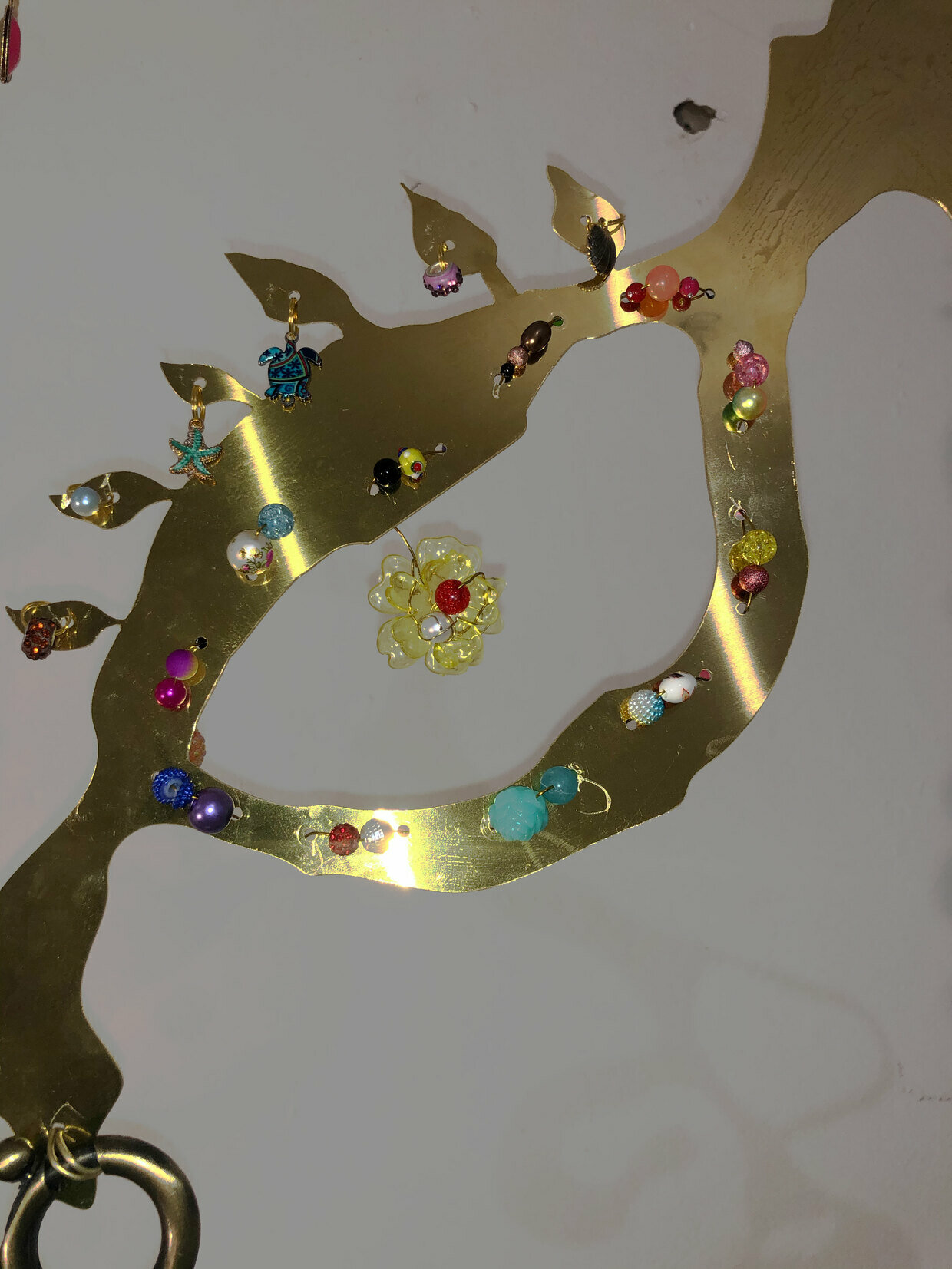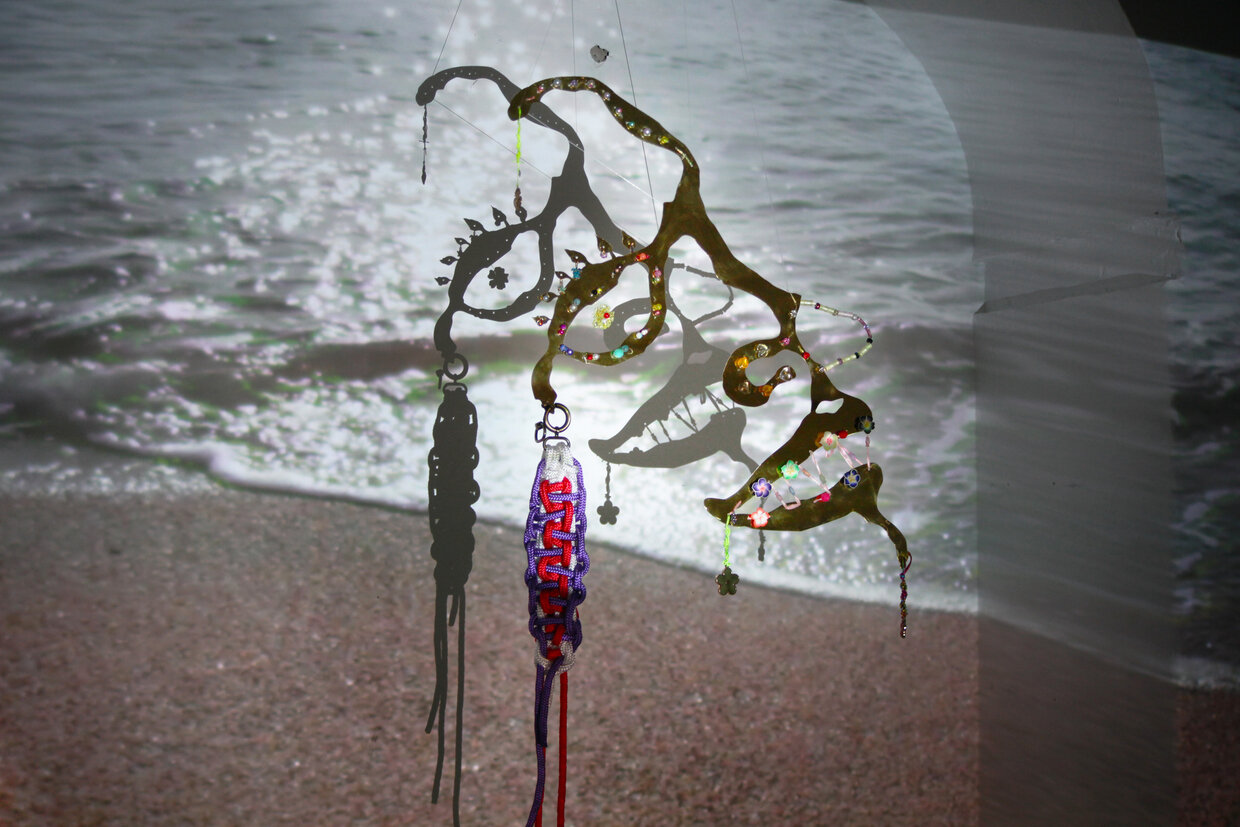
Victor: when reading your text about sampling, I can’t help to think about how much the idea of a “sample” has become part of our daily vocabulary. This was evident with our request of asking for a negative corona test in order to visit the exhibition. Given the exceptional circumstances, I would say there even is something eerie about requiring a sample in order to visit an exhibition about sampling. In a very general sense, I wonder how your thoughts and research about “samples” have been shaped by the pandemic this past year, and if this finds a way into your artistic practice?
Lena: Hey Victor, I definitely would say that a year of pandemic, as a quite new situation for most of us, re-shaped our sensitivity towards samples in particular, and sciences in general. The question of validity of certain results (e.g. covid-19 test) entered our everyday life, comprising their temporal as well as methodological aspects. The subject sample, is a little bit ambivalent. It exhibits singularity as well as universality, but not only in its artistic or scientific context. It is where artistic, scientific, political, and social issues may come together.
Aria: I found your research quite compelling and I also enjoyed following your
correspondence last time on the Circa 106 website. I was curious to hear from
you regarding the projection that happened in the space on the 18th of May
especially thinking of the camera as a tool that equally extracts images and fails
to live up to the complexity of the captured life. Maybe the scientific endeavor to
extract knowledge from the sample or even in its plural form (samples) is
founded on the presumption that removing the sample from its surrounding and
dragging it to the lab could assist the precision of the measurement. The
problem is that through this process of displacement and decontextualisation a
drastic amount of intervention is being deployed which usually is irreversible too.
So, I draw this parallel between the gallery and the lab and consequently the
sample and the artwork both detached from their intellectual and living habitat.
Could art practice be more nuanced and caring when it comes to a form of
symbiosis rather than top-down knowledge extraction?
Lena: In a sense, one can only fail in reality (An der realität kann man gewissermaßen nur scheitern), especially within the approach of acquiring knowledge or recognition. This is what all of those practices have in common. Probably the interesting point is, how to deal with it. One part of a strategy could be ex-situ samples. I would like to know why you oppose symbiosis and top-down extraction, and what exactly they mean. Anyway, I think that your question is hard to answer. My shortest would be “no”.

Irena: Given the collaboration you had now in different capacities, as component-version in The Dynamic Archive, the online response you worked on due to the cancellation of exhibitions in March 2020 and this last collaboration in space, is there something that stood out for you in terms of Marijana’s approach to sampling if you would ask her a question regarding her work in Circa 106, what would it be?
Lena: My question to Marijana is: What will happen next with the object you created for the exhibition? Will it hang somewhere else or in your flat? And: what is a sample for you? Apart, I want to say that I enjoyed a lot this collaboration, thank you, Marijana, Irena, and the HfK+ circa 106-Team!
Marijana: This is a question that haunts many non-profit artists. Most of the artworks end up in basements. I know this because I have a basement full of my own and my friends’ works. Since I am using a lot of plastic materials, which I try to glorify and rehab rather than critique and then cast aside, this time I also used recycled beads from some of my previous sculptures that were sitting in the basement. The whole theme of my practice is looking back to how plastic as a material came to be and how we exploited it with mass production, a small sample of our society as a whole in a small bead :) I don’t want to be that factory, I want the materials I use to circulate through my work as a constant reminder that they have nowhere else to go. Until it’s displayed somewhere where it’s appreciated, it will stay in my basement/ studio and continue rephrasing itself.
Hahaha yes, we’ve never met in person! Maybe this is the future of art or communication in general, let’s see. But I can already say that I miss the traditional face to face, hand to hand collaboration.
To me, a sample is what we can grasp in order to understand something way bigger or smaller than ourselves. A language that we can understand and then reply, communicate. I keep collecting little plastic pearls along the new Silk roads as samples of what’s to come, in this way (as a piece of information) they are as precious of gems as the real thing.
Suyeon: Thank you for your exhibition at the Circa106 project space. During the exhibition, the following questions have arisen. Regarding the theme of “Samples before Swine”, which explores the transformation and transmutation of the natural pearl all the way from its creation to the cultured and imitated forms. Therefore, it causes environmental pollution and the loss of its powerful symbolism in nature, such as confidence, purity, authenticity and power. What do you think of natural pearls as a form of living organisms, considering a shellfish has to be cut and forcefully open by the human hand? Also, what is your perspective on the symbolic meaning of the natural pearls?
Marijana: It’s hard to say that pearls are a living organism, when in reality they are more like kidney stones, a beautiful irritant. But in my work, in my personal mythology, they are living organisms and protagonists of the stories I tell. In this day and age I see genuine pearls as the ‘foremothers’ that gave birth to the idea of luxury, while coming from a world that seems so distanced from ours right now, in which plastic replicas have taken over. Even in my sculpture, there is one real freshwater pearl in there but no one’s ever gonna notice it.
This sculpture represents a ridiculously oversized and pretentious piece of jewellery, as a response to the growing trend over the past few years, where artists had to produce small-scale sculptures in a practical form of jewellery, sort of like little samples of their work, to be able to survive and sell something after losing their jobs and studios due to the pandemic or just horrible economy in general. So, let’s say that real natural pearls are expensive and rare like artworks, but the plastic beads, which replicate them for the masses, are just samples of this luxury, just like artist-produced jewellery. I am a collector of such craft and as much as I love and respect rare natural gems, I’m very emphatic towards the accessible ‘poor man’s pearls’ because they are the legacy of the myth and they represent the 99,9 %, the working class, the ideal democracy. Gems to the people!
As for the problematics of extractivism, concerning the part of your question about pearls being forcefully cut out from the shellfish, I guess I will talk more about that in my next work :)

Marcela: Taking into account the way pearls are formed (the shell's self defence against the invader) and even beyond that, the symbolic scope surrounding the material, do you think it would be interesting for your sculptural work to produce a material that conceptually has the physical characteristics of a pearl? That is to say, to think of a type of material that could be produced by, for example, artificial layering of some other given materials (paper, cardboard, metal, wood, etc).
Marijana: That’s an interesting question because I do mostly study the origin of the material I work with. I have to say that in this case I was mostly focused on plastic as a material and its trajectory from fossil fuels to friendship bracelets, as an example. What you are suggesting is a recreation of the pearl’s procreation, the very layering… this is a big topic and I’m definitely inspired so, thank you! :) it could be a semi-performative piece in the making as I see it.
Irena: Given the collaboration you had now in different capacities, as component-version in The Dynamic Archive, the online response you worked on due to the cancellation of exhibitions in March 2020 and this last collaboration in space, is there something that stood out for you in terms of Lena’s approach to sampling and if you would ask her a question regarding her work in Circa 106, what would it be?
Marijana: Hi, Lena! I appreciate how our collaboration grew over the past year, although we didn’t know each other and never actually met in person, so it was a bit challenging. Still, I think we understood each other perfectly fine and I’m happy with the outcome.
During our online version-room project, we agreed to a more poetic approach, mixing your predominantly scientific finds with my dreamed up narratives and that’s exactly what we got. However, for the final exhibition at Circa 106, the initial idea was to exhibit some of your sea-basin samples, sands and metals, silica and similar, so I decided to make my work in metal, glass, plastic, pearl… Would you agree that your projection was a background of our idea - the landscape of the origin of the materials/ samples, whereas mine stood there as the final product of that landscape? A full-circle, one might say :) Correct me if I’m wrong!
Lena: I mostly agree, Marijana! From our collaboration (which I also really enjoyed) point of view, one of quite a lot of possible full circles was drawn! And what I like about cycles is, that someone can’t say where it starts and where it ends. Somehow I would disagree about the term of predominately scientific findings (I had none ;) and furthermore about the clear distinction between background and result. Of course we had some waypoints in that sense, but I liked a lot the moment when things came together in the exhibition, diluting those temporal and spatial dimensions.
